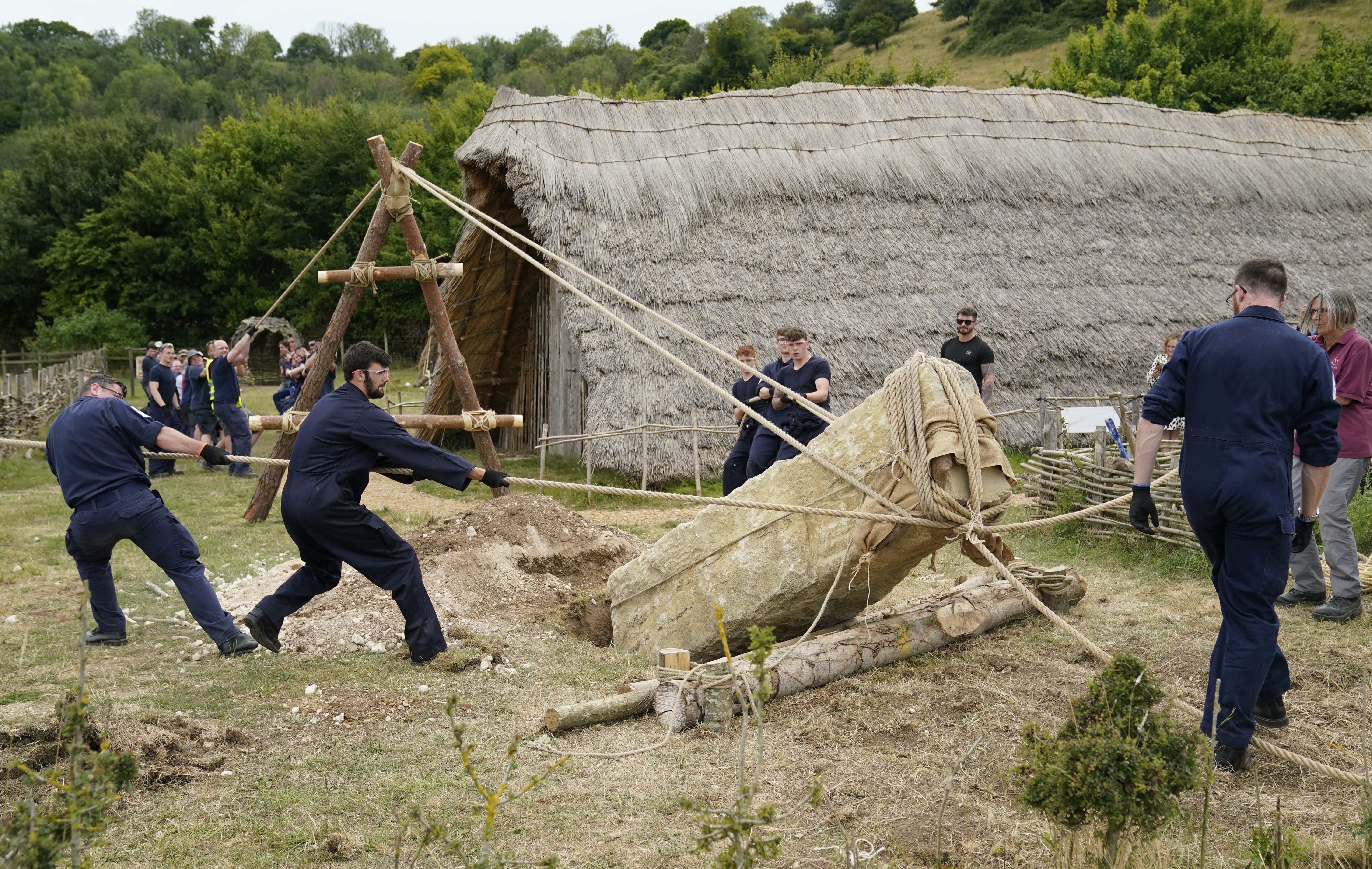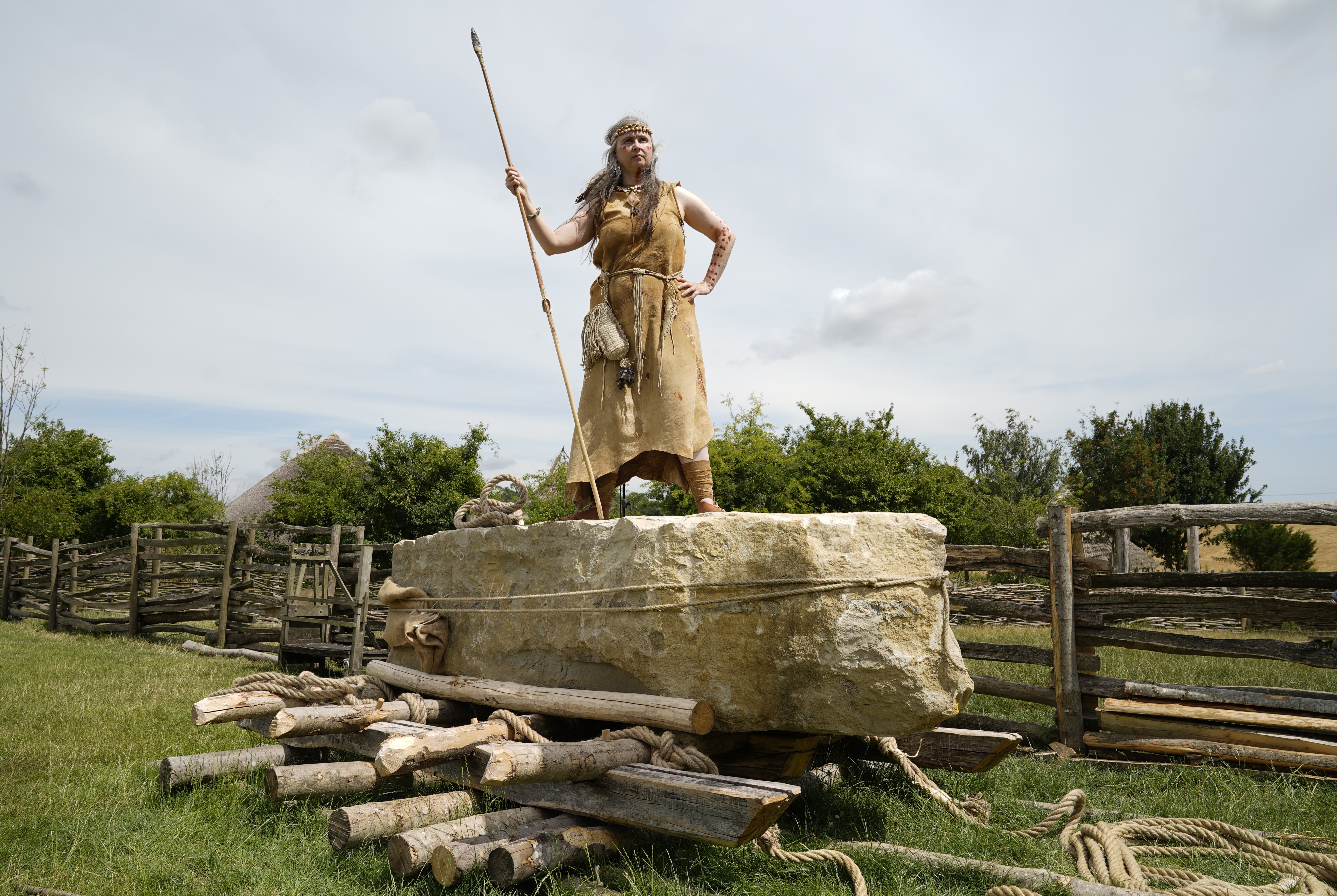
Sailors from Royal Navy aircraft carrier HMS Queen Elizabeth have used traditional methods to move and erect a three-and-a-half tonne standing stone.
The procedure involving a wooden sled and ropes was carried out with staff and volunteers at Butser Ancient Farm in Chalton, Hampshire, to mark the centre’s 50th anniversary.
The standing stone, which was moved approximately 30 metres before being stood up, is formed from Purbeck limestone from Swanage, Dorset, where it has been quarried since at least the time of the Roman empire.

Simon Jay, director of Butser Ancient Farm, said: “The standing stone will act as a 50-year marker for us and we are planning to coincide its erection with the Council for British Archaeology’s Festival of Archaeology which has the theme of journeys this year, so the movement of the stone fits well with that theme.
“We will also attempt to align the stone to the midsummer sunrise and over time we may add more smaller stones in the surrounding area that can create different alignments such as at midwinter too.”
He added: “This is an important year for us. Butser Ancient Farm began life in the 1970s as an experimental archaeology site looking at Iron Age life.

“We were and still are completely ground breaking with no other site in the UK taking such an in depth look at how life was really lived by our ancient ancestors.”
Reverend Eddie Wills, from HMS Queen Elizabeth, said he organised the ship’s involvement after he had previously volunteered at Butser.
He said: “I knew how much the ship’s company would enjoy visiting the farm and getting stuck in.
“I got in touch with Butser to offer our services for a community project and this is what was suggested. It struck me as a great opportunity to demonstrate the Royal Navy’s can-do attitude.”







